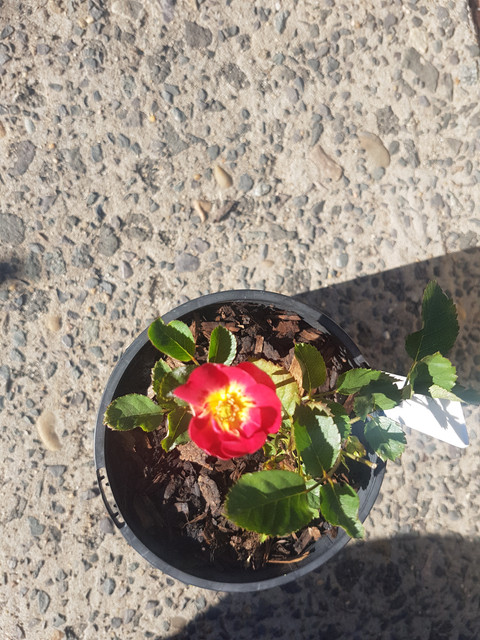Wow! Congratulations! Those are some real results there! And, they’re so pretty!
Thank you!
You’re welcome!
I’ve been somewhat AWOL for a bit, and have missed a few neat posts. Jonathan, those are some pretty cool seedlings from Palustris. I particularly like the R. fedt. foliage, as well as that of the first R. rox. cross, and will be curious as to what those will offer moving forward.
Is the last one also thornless? (Dunno why, but I would have expected leaflets a tad more lanceolate. The roundness of Wich came through, while none of the glossiness did, it appears.)
Kim, I still have a couple of germinations from your crosses that, despite having short-lived and somewhat underwhelming blooms, I may have to find a little space to see what they do in the ground – In view of the lousy performance of all of my other seedlings, I think pot culture isn’t a very fair evaluation for roses in this climate. I’ll have to shoe-horn them into some pretty tight spaces, but I’m assuming most of the seedlings will be culled within a year after being in-ground evaluated. I wonder, however, if other folks do this and have concerns about rose-replant disease?
The L56-Min seedlings seem to be quite resilient. (I have a couple others still too, but don’t recall parentage offhand.)
Joe, as usual, I envy you your seedlings, and your ability to evaluate them in your setting. Very nice plants! I hope you can get repeaters in the next round from your carolina/virginiana lines. They look quite attractive.
It is not thornless, just young. And you are correct, typically the F1 palustris hybrids have fairly lanceolate leaves, but this one has taken after its grandfather, for now. The mature foliage will probably be more narrow.
-Jonathan

OP seedling from Baby Faurax. Yellow base and reverse.
The only yellows nearby were Sunny Knock Out and Sweet Spot Calypso, Foetida, Golden Cheronese…likely pollen from further away as none of those seem appropiate at this point.